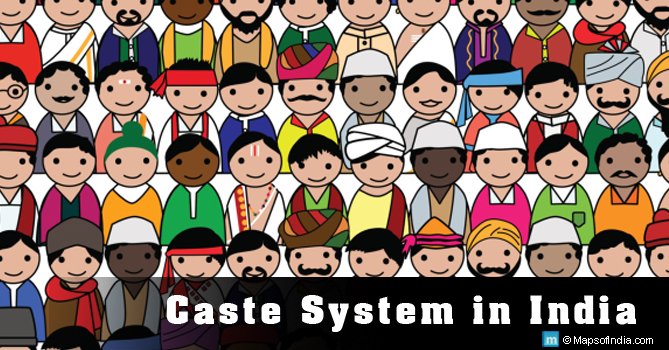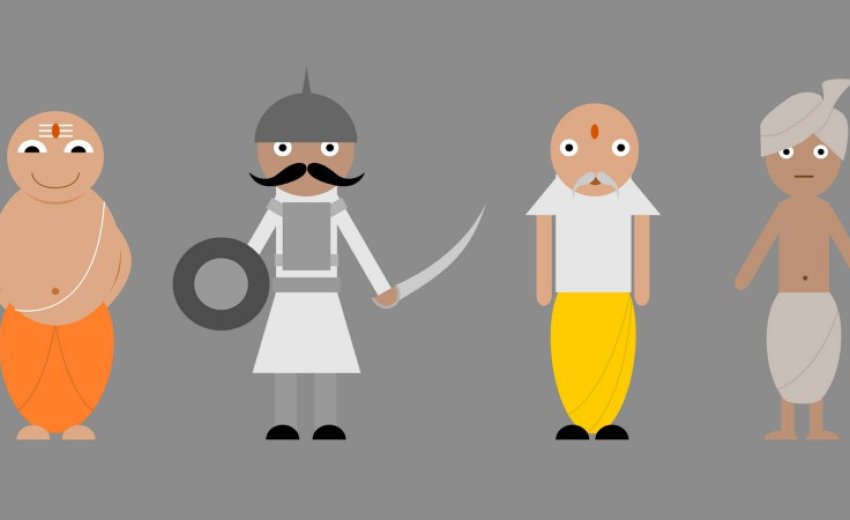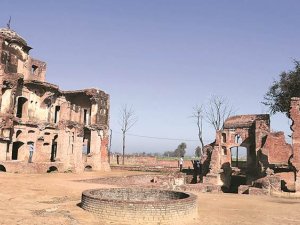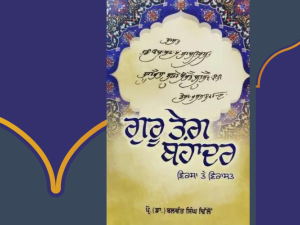Introduction
The present generation among Sikhs are unfortunately far away from Gurbani and Amrit di Daat. The caste based arrogance and self glorifying history still consumes us. Sikh children as young as 12 years old are aware of their caste and that of their fellow classmates. They can be dismissive of other castes and extreme proud of their own. Introspection is required to understand how these young people are aware of the complexities of caste hierarchy? Who is telling them? Regrettably we elders are to be blamed for this. Our conversations at home and within community are picked up by youngsters where we displayed pride for our caste and shrug off other castes.
The caste system is severely condemned in Guru Granth Sahib Ji and has no place in Sikh religion. There is equality in Sikhi and people are judged by their deeds and not on account of their so called low or high birth. The Gurus threw away the concept that Brahmins, Kshatriyas, Vaisha were any way superior to each other or to Sudras. The emphasis is on pure conduct and shunning of ego.
Hence caste is a taboo topic among Sikhs. Sadly it exists and is definitely a serious issue in rural Punjab. Caste in some ways affects all religions in the sub continent to varying degree. Admission of a problem is a first step towards finding a solution. Let us discuss the status of Jatts, Ramgarhia and Ahluwalia castes as a case study before they joined the Sikh religion.
ਜਾਣਹੁ ਜੋਤਿ ਨ ਪੂਛਹੁ ਜਾਤੀ ਆਗੈ ਜਾਤਿ ਨ ਹੇ ॥੧॥ ਰਹਾਉ ॥
Jaanahu Joth N Pooshhahu Jaathee Aagai Jaath N Hae ||1|| Rehaao ||
जाणहु जोति न पूछहु जाती आगै जाति न हे ॥१॥ रहाउ ॥
Recognize
the Lord's Light within all, and do not consider
social class or
status; there are no classes or castes in the world hereafter.
||1||Pause||
Raag Asa Guru Nanak Dev Ang 349
Status of different caste The traditional Indian society was based on 4 varnas namely Brahmin (Priest), Kshatriya (Warrior), Vaish (Traders) and Sudra (Labourers). The last one served the first three 'twice born' varnas. By the time of Guru Nanak Sahib Ji, the varna system had changed in Punjab (territory between Indus and Yamuna rivers) in North India. Let us discuss how it affected the various varnas.
Jatt
As per the old Hindu books, agriculturists belonged to the third varna, Vaish but with time their status depreciated. They had to work for big landlords who were aligned to the Afghan or Mughal regime at Delhi. The Jatts were the main agriculturist community in the region. Their unique status is described by Daulat Rai in 1906. The Punjabi translation of his book 'Sahib e Kamal Guru Gobind Singh' states that 'Jatts were the Brahmins among Sudras'. Much to the chagrin of Jatts, the Brahmin did not accord the 'Kshatriya' status to them. This resentment continues even till today among Hindu Jaats. The Rajputs were also unwilling to accept them as equal. Historians believe that Jatts and Rajputs were from the same stock and those who took agriculture as profession became Jatts. Another bone of contention was 'Sati' and 'Widow Remarriage'. The 'Sati' self immolation of the bride on the funeral pyre of the husband was seen as virtuous by Rajputs but completely unnecessary by the Jatts. In fact they actively encouraged widow remarriage. If the widow was of child bearing age or had young children then the brother of the deceased would take her as his bride. This ensured protection of the widow, children and the property remained within the family.
When Maharaja Ranjit Singh passed away in 1839, only his Rajput (Hindu) wives committed Sati. The Jatt (Sikh) and Muslims wives did not commit Sati as there was no tradition among those communities. Nevertheless in short, Jatts were unhappy with the social order. Even in rest of India, a farmer was not given the status of Kshatriya.
When the Sikh Gurus imparted the message of social justice and equality, the Jatts of Majha area of Punjab quickly found resonance with it and joined the Sikh faith in great numbers. The 'Amrit Daat' given by Guru Gobind Singh Ji infused martial spirit among the community and later they became the master of Punjab. The majority of the Misl were headed by Jatts. Even today about 50% of the Sikh community comes from the Jatt background.
Ramgarhias
The Ramgarhia Sikhs are those who traditional belonged to the carpenter caste. The profession of the carpenter is of artisan nature so should have belonged to the 'Vaish' or the third varna as per old Hindu texts but the rigidity of caste system meant that they were also classified as Sudra. We are all well aware of the Sakhi of Bhai Lalo who was of carpenter caste. Guru Nanak Sahib Ji refused to join Malik Bhago is his feast but ate at Bhai Lalo's house for his honest living. Bhai Lalo is referred as badisut (old name for carpenter) and sudra in Janamsakhis.
They took Amrit Daat of Dashmesh Pita and Sardar Jassa Singh Ramgarhia founded the 'Ramgarhia Misl', one of the most powerful Misl. The Sikh religion elevated and raise the status of the community.
Ahluwalia
The Ahluwalia community traditionally are those who were professional distillers of alcohol. They were also classified as Sudra. They also took Amrit Daat and became Warrior Saints. Sardar Jassa Singh Ahluwalia led the Dal Khalsa very aptly and founded the Ahluwalia Misl. The royal family of Kapurthala are the descendants of this great man. Jodh Singh Ahluwalia was instrumental in the early success of Maharaja Ranjit Singh. His successor Nihal Singh Ahluwalia fought the first Anglo Sikh war from Khalsa Darbar's side.
These three communities tasted royalty and lifted their status by embracing Sikhi but today Sikhs far away from the 'Amrit' and humbleness. We keep on feeding our children with self glorifying history. The fact is that 500-700 years before embracing Sikhi, none of these communities in Punjab had done anything worth remembering and were oppressed by the caste system. It is ironic that we have forgotten our humble backgrounds and digressed to the same caste system which our Gurus took us out.

Sudra - Untouchable
Most people ignore that there were basically two categories of Sudras. The first category was those who served the first three castes. The second category was the 'Untouchable' caste. The 'Chamar' community who worked on leather belongs to this category. The skinning of an animal was considered filthy and those who had to work had to get themselves dirty and 'impure' hence their touch and presence was avoided. So within the Sudra there were levels, a Kumhar (potter) or Lohar (blacksmith) was considered higher and not untouchable. The lowest in the category was those who picked and dispose of the human excreta. They are found in some parts of India but not in Punjab.
Amrit di Daat and Martial Spirit
Most Sikhs youngsters may not be aware that in addition to the famous Sikh Regiment, there is another infantry division of Indian Army know as 'Sikh Light Infantry'. The regiment takes Sikhs from Mazabhi (sweeper) and Ramdasia (leather workers) backgrounds. The British recognised the bravery of these communities which has a strong tradition from Akali Nihangs. The famous Akali Phula Singh belonged to the Mazabhi Sikh community, like scores of Nihang Sikhs in history. This regiment has won 5 Mahavir Chakras, the second highest gallantry award. The Amrit di Daat made us 'Knights' and irrespective of the backgrounds, Sikhs became a martial nation.
Ravidasia
Unfortunately the Sikh community has not been able to take along the Ravidasia community along and we have Ravidas Gurdwaras in Punjab. The community hold Bhagat Ravidas Ji in utmost reverence. He is referred as Guru Ravidas and is the most important deity for them. The presence of Ravidas Gurdwara and some Ravidas Temples in Punjab especially in Doaba region signifies few things. Firstly that Ravidasia community feels that they are different from the mainstream Sikhs and are no longer financially poor. Like others in Doaba, this community also went abroad and have reaped the benefits of foreign income. The community are no longer Keshdhari and are 'clean shaven'. In fact most of them do not like to be referred as Sikhs. Interestingly what started as a 'class struggle' of a farmer with the landless labourer in a rural setting still continues when majority of both communities have moved away from the traditional professions. The caste division has completed its full circle. Many of them are happy to be referred as Hindus.
The troubles in Punjab through the 1980s and 90s meant that Sikhs became more cohesive. They are singled out because of their turban. Hence for that generation caste became bit secondary however Ravidasia community in Doaba region missed out on this cohesion as they were not Keshdhari. Inter-caste marriages are now bit more common among Sikhs but rare among Ravidasia/Mazabhi and rest of the castes. The exception is made, when there is a high ranking officer (Punjab Civil Services etc) or politician from these castes. Sikhs from so called higher caste are more willing to give their daughter in marriage to them in these cases. The local MLA in Amritsar district who is from Ravidasia/Mazabhi caste has two daughters in laws who are from Jatt caste.
Most of the labour working on Punjab farms are migrants from UP and Bihar. The Ravidasia community are no longer the 'landless labourer' or working on the leather but they still feel that the Sikhs in general and Jatts in particular are not forthcoming in embracing them. The Sikhs feel that they have forsaken their Sikh identity and they are heterodox in their belief and rituals. So from a class/caste differential, we also have differences in religious practice.
Present situation
Regrettably the Akali party in Punjab which represents Sikhs has not been able to come up with any leadership other than Jatts. Although it could be argued that they are just a family led party. We need to be more inclusive and communicate more across various groups within Sikh religion. Occasionally we read in the news that a Mazabhi Sikh was not treated with the same respect at the village Gurdwara Sahib. In one case they were declined to undertake Anand Karaj, the Sikh wedding in the Gurdwara Sahib due to their background. In a rare case, one person was even denied entry into the village Gurdwara Sahib. The Akal Takhat Sahib needs to take Management of these Gurdwara Sahibs to task. More needs to be done to make SGPC and Akali Dal more representative and inclusive.
A USA based Sikh gentleman shared his experience with me. He has a farm in Western UP which has substantial minority of Sikhs. He was invited by a local Singh to attend the Bhog of Akhand Sahib. When this Sikh gentleman went there, he found few people in addition to family members. Upon enquiring the local Singh told him that he belonged to the so called 'untouchable' caste and later took Amrit and became Sikh but the local Sikh community in the village do not deal with him due to his caste. The local Singh is very happy to be a Sikh and despite this experience still founds Sikhi empowering. Can these people with prejudices be called 'Guru ke Sikh'? They seem more like 'Manu (Smriti) de Sikh'. Unfortunately this type of behaviour is not uncommon in villages of Punjab as well. If I face a racist incident I have a helpline number to ring in UK. Why can't we have a mechanism where we can ring and an organisation can collect data about this biasness and then as a Nation we find ways and means to correct this behaviour?
I would like to acknowledge that there has been increase in inter-caste marriages as youngsters are more independent and studying in co-educational environment. The so called love marriages are on the rise. So in some ways the caste-system is on the decline but this is true only among urban and Diaspora Sikhs. Ideally speaking caste should play no part in our consideration when we deal with people or even when we consider potential match for the marriage of our next generation. Although inter-caste marriage is not their first choice, the parents agree to these marriages, reconciling themselves that the children could have gone for a marriage from someone outside the Sikh community. The situation in rural and semi-urban areas is that people do not blink twice before making a castist remark. Regrettably it is so much part and parcel of our psyche we do not notice our prejudice and sometimes even defend it. These prejudices then lead to differential and discriminating behaviours.
Conclusion
Buddhism lost its foothold in India when it got split into 16 sects and Buddha's statues came up and Buddhist started worshipping him as a God. Buddhist simply lost their uniqueness and became more like the dominant religion. Sikhism is in real danger of falling into that trap. Just as we have been very resolute against idol worship, we need same determination to eradicate these prejudices about caste system. Sikh religion should have been the dominant religion in the region among lower caste as it is based on equality and social justice but our prejudices have made some of us the 'Brahmins' among Sikhs. Only 15% Sikhs are Amritdhari. We need to study, contemplate and try to implement Gurbani in our lives.
It is also important is that we all reevaluate and remember our humble backgrounds before feeding self glorifying, mostly mythical history to our children. We were next to nothing and it was Gursikhi and Amrit di Daat which raised our status and infused martial spirit among us. The need of the hour is follow Guru Granth Sahib Ji in word and spirit and shun away from any biased behaviours.
PS - I would like to thanks friends who took time and energy to speak to me on this taboo subject. The article would not have been possible without their active cooperation.






